Ever feel like life’s just throwing stuff at you faster than you can duck? Deadlines, social plans, that houseplant you swear you’ve been taking care of (but still looks like it’s auditioning for a dried flower arrangement)—it’s a lot. The good news? You don’t have to tackle everything all at once. That’s where chunking comes in.
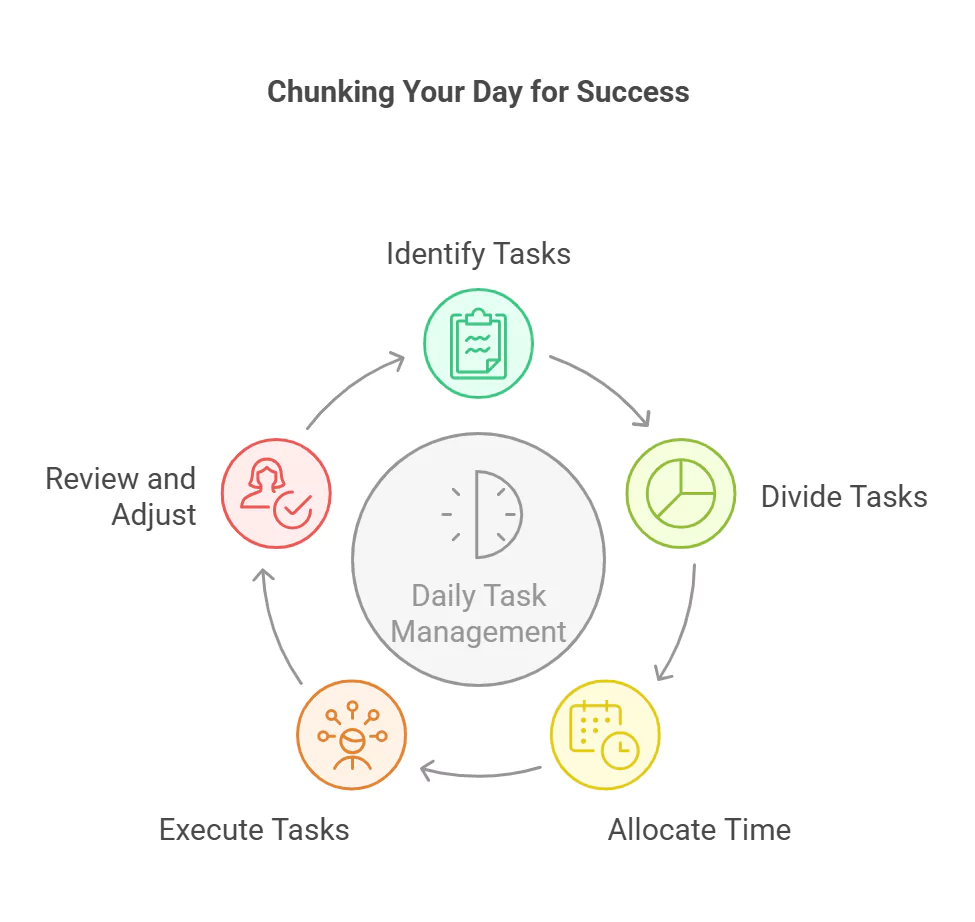
Chunking is this simple but kind of genius strategy that makes even the messiest, most overwhelming days feel doable. Instead of staring at your chaotic to-do list and feeling your brain short-circuit, you break it all down into smaller, manageable tasks. Suddenly, you’re breezing through your day, knocking things out left and right, and maybe even sneaking in a little extra downtime. Let’s talk about how this magical productivity hack works and why I think it’s such a game-changer.
What’s the Deal with Chunking?
Chunking is basically about taking big, scary tasks and slicing them into bite-sized pieces. Think about it like eating pizza—you don’t just shove the whole thing in your mouth (unless it’s one of those days). You take it slice by slice. Whether it’s organizing your day, learning something new, or tackling a massive project, chunking lets you work smarter, not harder.
Ready to see how it can make your life way easier? Let’s dig into some examples that’ll have you wondering why no one taught you this sooner.
1. Break Your Day Into Bite-Sized Pieces
Ever feel like you’re spinning plates and dropping all of them? That’s where chunking swoops in to save the day. Instead of trying to do everything at once (and ending up fried), split your day into smaller blocks, each with its own mission.
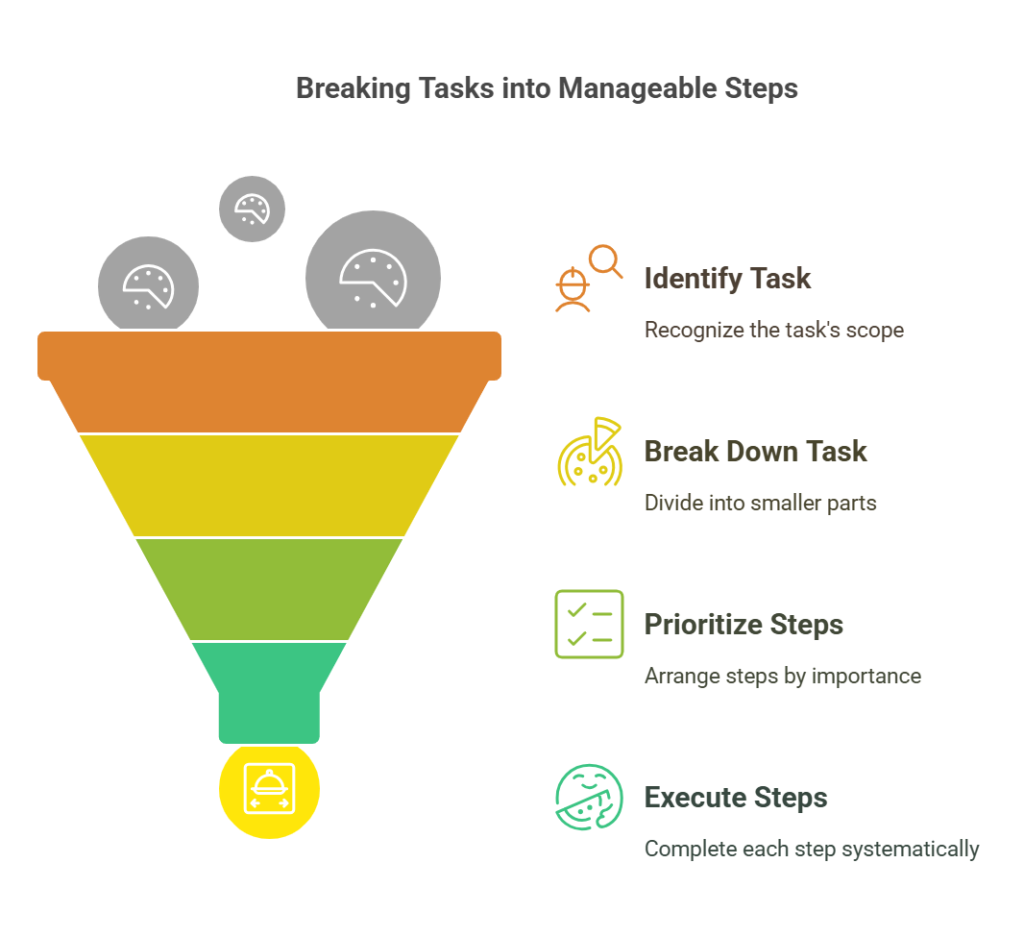
How It Works:
- Chop your day into chunks of time.
- Give each chunk a specific job.
Example:
- 9–11 AM: Knock out the big, important stuff (before your brain decides it’s done for the day).
- 11–12 PM: Tame the email monster.
- 1–2 PM: Team meetings or catch-ups.
- 3–4 PM: Plan tomorrow, so Future You is set up for success.
Pro Tip: Try the Pomodoro Technique—work for 25 minutes, then take a quick breather. It’s like hitting the refresh button on your focus.
2. Learn Without Overloading Your Brain
Learning something new, whether it’s a language, a hobby, or even a new app at work, can feel like trying to drink from a firehose. There’s just so much. But chunking makes it manageable—and dare I say, kind of fun—by breaking it into small, easy steps.
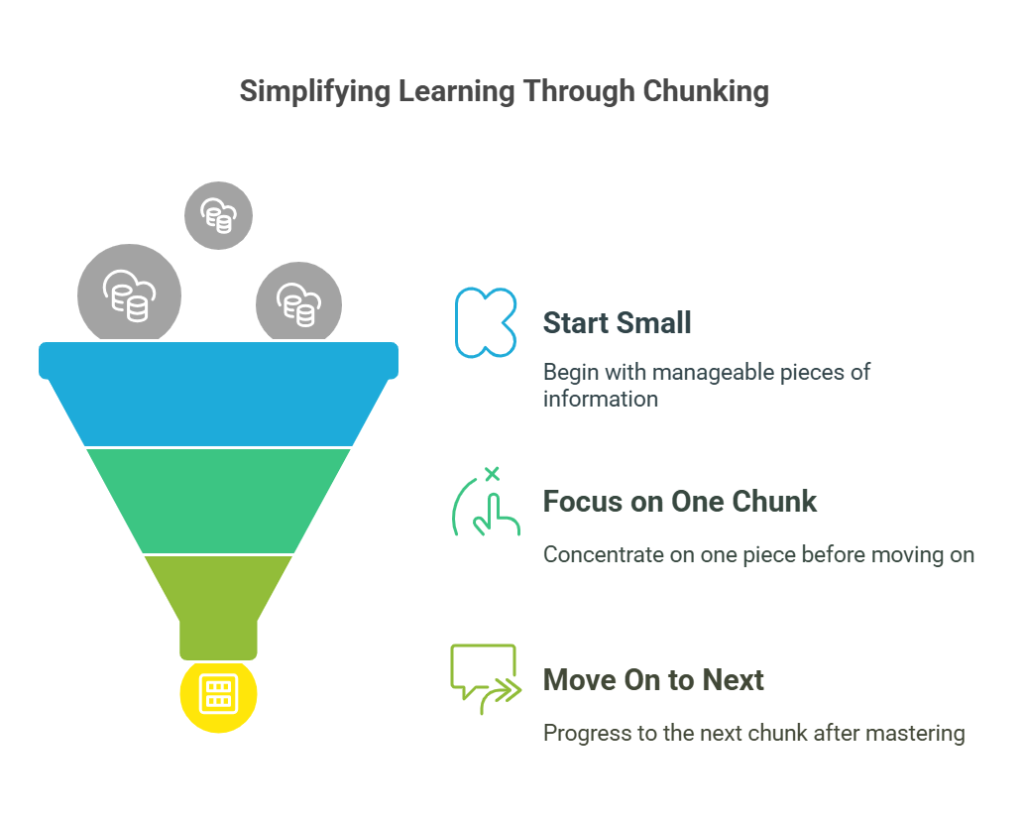
How It Works:
- Start small. Don’t try to eat the elephant all at once (weird expression, but you get it).
- Focus on one chunk at a time, then move on.
Example: Learning a language:
- Chunk 1: Nail the basics like “hello,” “thank you,” and “where’s the bathroom?”
- Chunk 2: Learn everyday words like colors, numbers, and verbs.
- Chunk 3: Dip your toes into some grammar.
Fun Fact: Studies show chunking can boost your memory by 40%. It’s like giving your brain sticky notes to keep everything organized.
3. Tackle Big Projects Without Melting Down
Got a giant project looming over you like a storm cloud? Whether it’s writing a report, planning an event, or pulling off a surprise party, it can feel like Mount Everest. But chunking makes it less “impossible” and more “I’ve got this.”
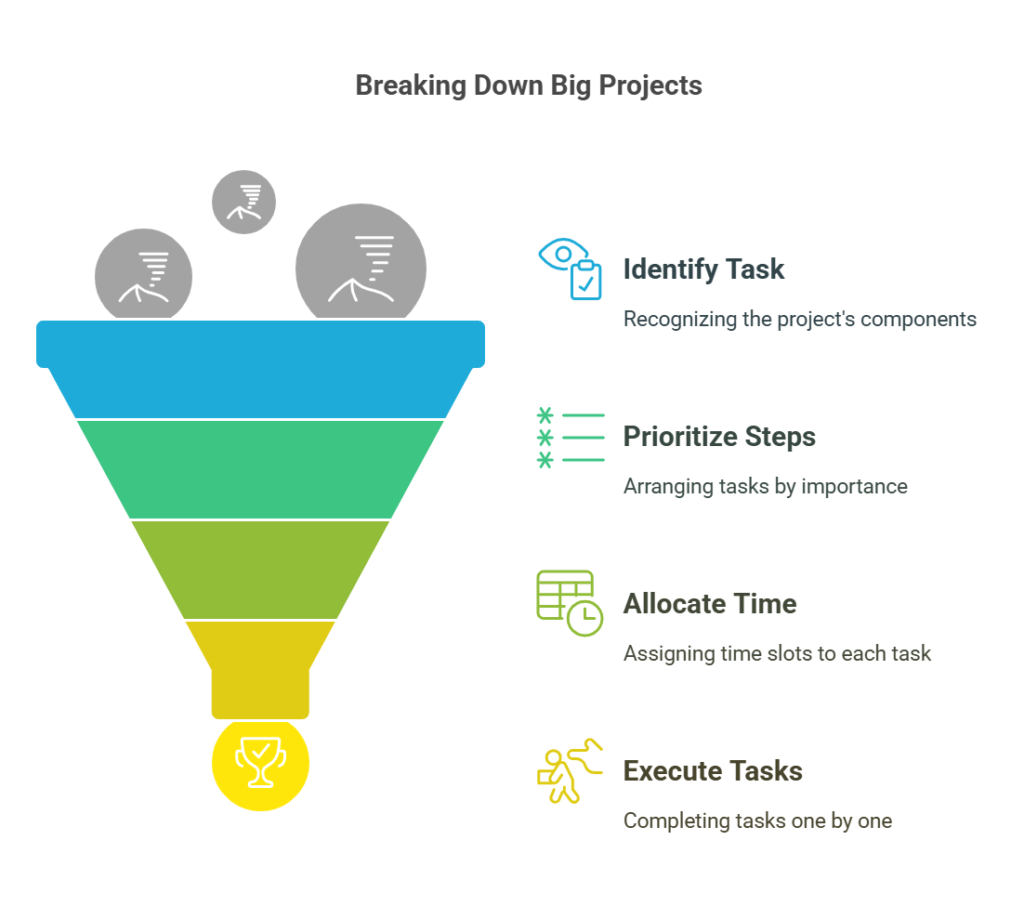
How to Do It:
- Get clear on what “done” looks like. What’s the endgame?
- Break the project into big chunks—research, planning, execution.
- Chop those chunks into smaller, bite-sized tasks.
- Start with something easy to get the ball rolling.
Example: Writing a report:
- Chunk 1: Gather research.
- Chunk 2: Create an outline.
- Chunk 3: Write the first draft.
- Chunk 4: Edit until it’s golden.
Before you know it, you’re sitting there thinking, “Wow, that wasn’t so bad.”
4. Clean Without Feeling Like Cinderella
Cleaning can feel endless. Seriously, you dust one day, and the next, it’s like your furniture decided to roll around in dirt. But chunking turns cleaning into a series of quick, satisfying wins.
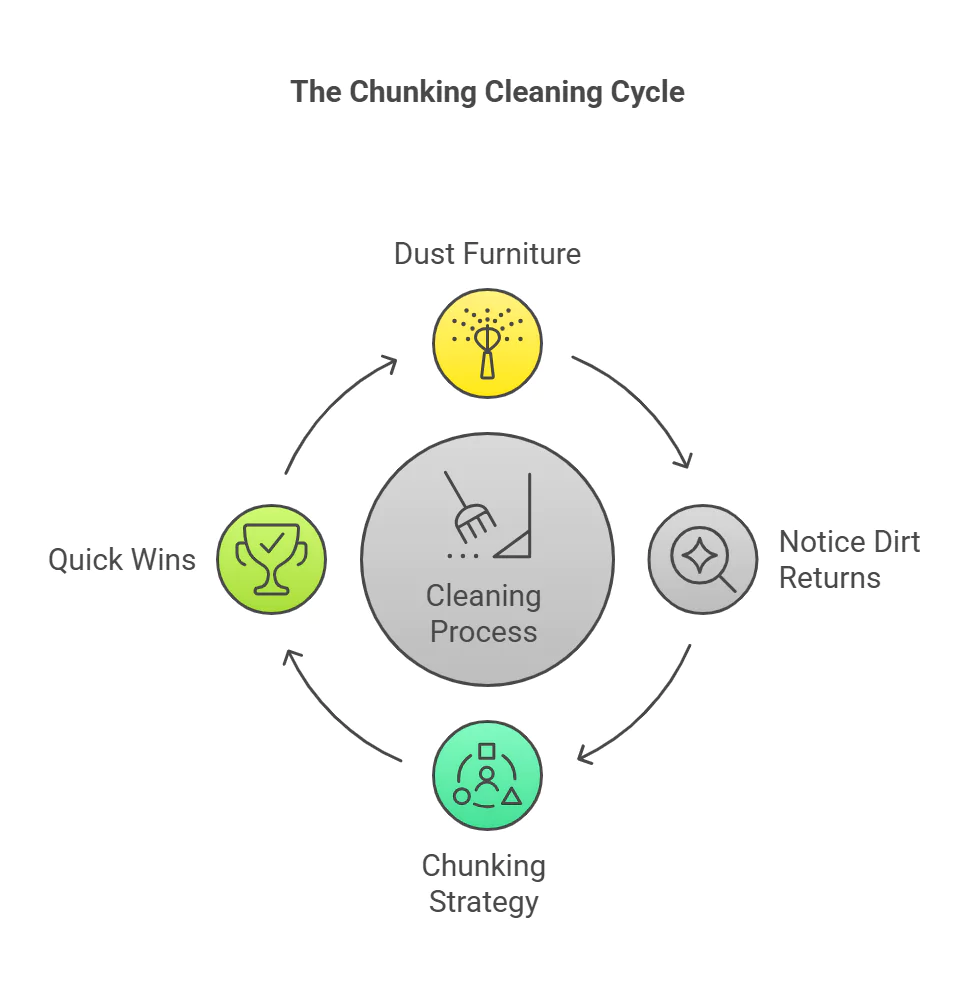
How to Do It:
- Focus on one room or area at a time.
- Group similar tasks together—dust everything first, then vacuum, and so on.
Example: Cleaning your bedroom:
- Chunk 1: Pick up clothes and do laundry.
- Chunk 2: Dust the surfaces.
- Chunk 3: Make the bed and vacuum.
Suddenly, it’s not this overwhelming marathon—it’s a few quick sprints.
5. Meal Prep Without Losing Your Mind
Cooking for the week can feel like running a Michelin-starred kitchen, minus the professional chefs. But chunking makes it easy.

Example:
- Chunk 1: Plan your meals and make a grocery list.
- Chunk 2: Hit the store (and maybe treat yourself to a coffee after).
- Chunk 3: Chop your veggies and cook the proteins.
- Chunk 4: Assemble meals and stash them in the fridge.
By the time you’re done, you’ll feel like a kitchen boss—and you’ve saved yourself hours during the week.
6. Work Out Without Overdoing It
Starting a new fitness routine can feel like biting off way more than you can chew. The key? Ease into it.

Example:
- Chunk 1: Start with a 10-minute walk each day.
- Chunk 2: Add in some basic bodyweight exercises twice a week.
- Chunk 3: Gradually increase the intensity as you build the habit.
Bonus Tip: Same goes for eating healthier—don’t try to overhaul everything at once. Swap one soda for water, sneak an extra veggie onto your plate, or prep a few healthy snacks ahead of time. Baby steps!
7. Remember Stuff Without Turning Into a Goldfish
Got a list of random things to remember? Whether it’s groceries, a presentation, or your new coworker’s name, chunking can help.

How It Works:
- Group similar items together.
- Use patterns or acronyms to help them stick.
Example: Grocery list for taco night:
- Dairy: Cheese, sour cream.
- Veggies: Lettuce, tomatoes, onions.
- Protein: Ground beef, chicken.
Boom—way easier than trying to remember a random jumble of stuff.
8. Save Money Without Feeling Miserable
Saving for something big—like that dream vacation, a new gadget, or finally chipping away at some debt—can feel like trying to fill a pool with a teaspoon. But chunking? Oh, it’s a total lifesaver. It breaks your big money goals into smaller steps that actually feel doable.

Example: Let’s say you want to save $1,000 in 3 months:
- Chunk 1: Set aside $100 a week. Sounds easier, right?
- Chunk 2: Trim the fat on those little extras—maybe skip your fancy $6 latte a couple of times a week. (I know, it hurts, but your wallet will thank you.)
- Chunk 3: Track your progress weekly. Seeing that number climb is weirdly satisfying and keeps you motivated.
When you look at it like this, saving stops feeling impossible and starts feeling…manageable. Bonus? You’re not surviving on instant noodles or feeling like you’ve given up every little joy in life.
9. Turn Awkward Small Talk into Smooth Conversations
Not everyone’s born a smooth talker (seriously, who likes small talk?), but chunking makes it so much easier to navigate conversations without those cringe-y, awkward pauses.
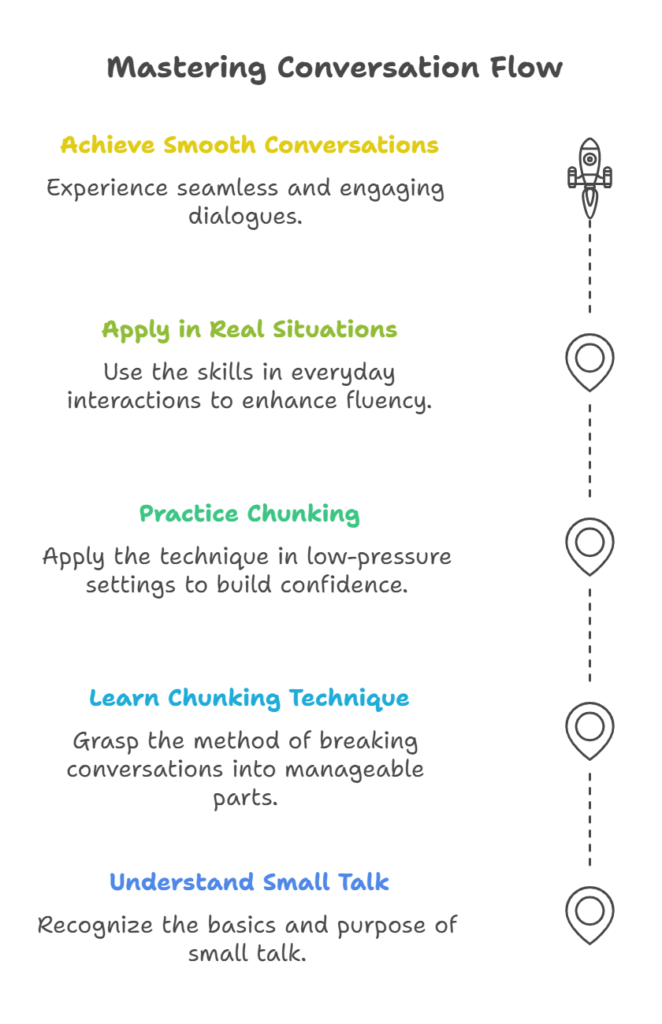
How It Works:
- Chunk 1: Start with something simple—“Hey, how’s your day going?” Easy, non-threatening, and gets the ball rolling.
- Chunk 2: Toss in a little light banter—weekend plans, a funny TikTok you saw, or even the weather if you’re really stuck.
- Chunk 3: Shift into the real talk—whether that’s a deeper topic, a shared interest, or the actual reason you’re chatting in the first place.
Breaking it down like this is like having a road map for conversations—no more detours into awkward silence-ville. Plus, once you nail this, you might actually start enjoying these chats (crazy, I know).
10. Untangle Your Stress Without Losing It
You know that feeling when stress starts piling up, and suddenly it’s like you’re buried under a mountain of “how am I going to handle all this?” Yeah, we’ve all been there. Chunking helps you climb out of that mess one step at a time.
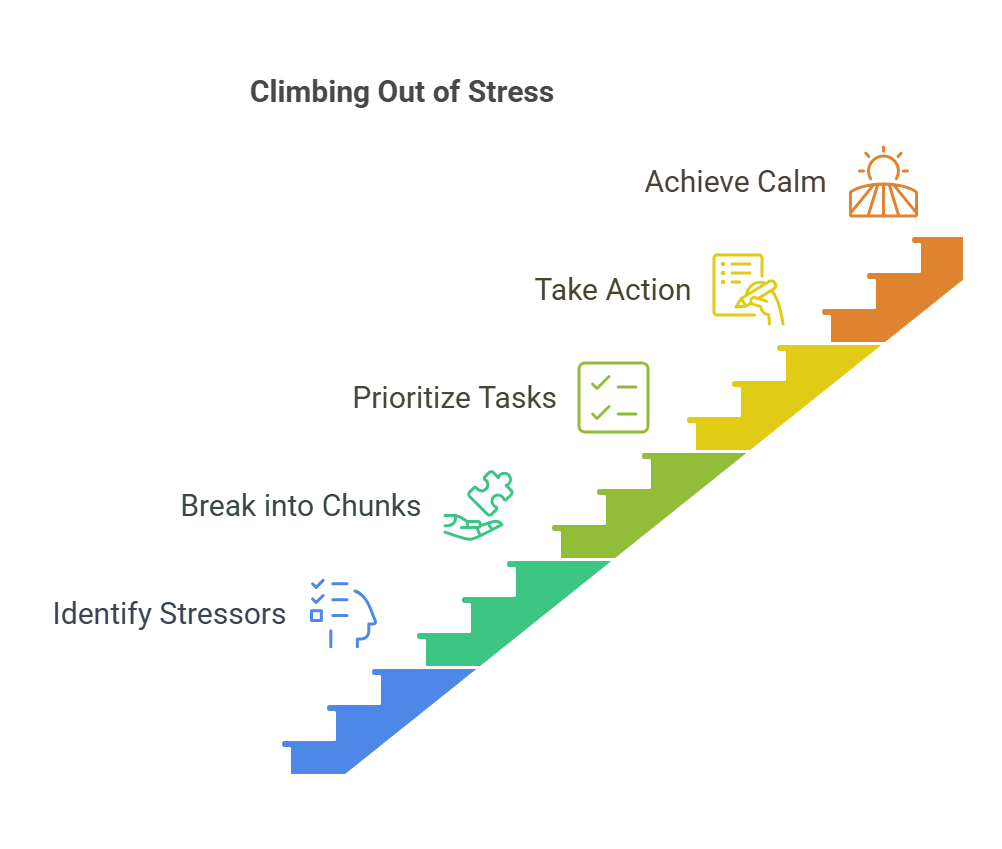
How to Do It:
- Dump all your worries onto paper. Seriously, just brain-dump every single thing that’s stressing you out. It’s like hitting the reset button for your mind.
- Group similar worries together—work deadlines, household stuff, money problems. It’s easier to tackle things when they’re in neat little piles.
- Pick one chunk to focus on and knock it out before moving to the next.
Bonus Tip: Pair this with some deep breaths or a quick mindfulness session. It won’t fix everything, but it’ll help you feel a little more in control while you tackle that stress tornado.
The Science Behind Chunking
Here’s the cool thing: chunking works because it’s how our brains naturally want to work. Your mind loves patterns, connections, and bite-sized bits of information—it’s like giving it a shortcut to process things without frying your circuits.
Think about it:
- When you memorize a phone number, you group it (123-456-7890) instead of trying to remember a long, messy string of digits.
- When you’re learning something new, you take it one step at a time instead of diving into the deep end.
It’s just how we’re wired, and once you start using it, life gets so much easier.
Visual Example: Chunking in Action
Picture this: you’ve got a 1,000-piece puzzle dumped in front of you. Trying to solve it all at once? Forget it—you’ll lose your mind. But if you sort the pieces by color or pattern first, suddenly, it’s manageable.

That’s chunking in a nutshell: turning chaos into order. Whether it’s a puzzle, your to-do list, or even life in general, chunking helps you focus on what matters and make progress without the overwhelm.
How to Get Started with Chunking
Excited to give this a try? Here’s your quick-start guide:
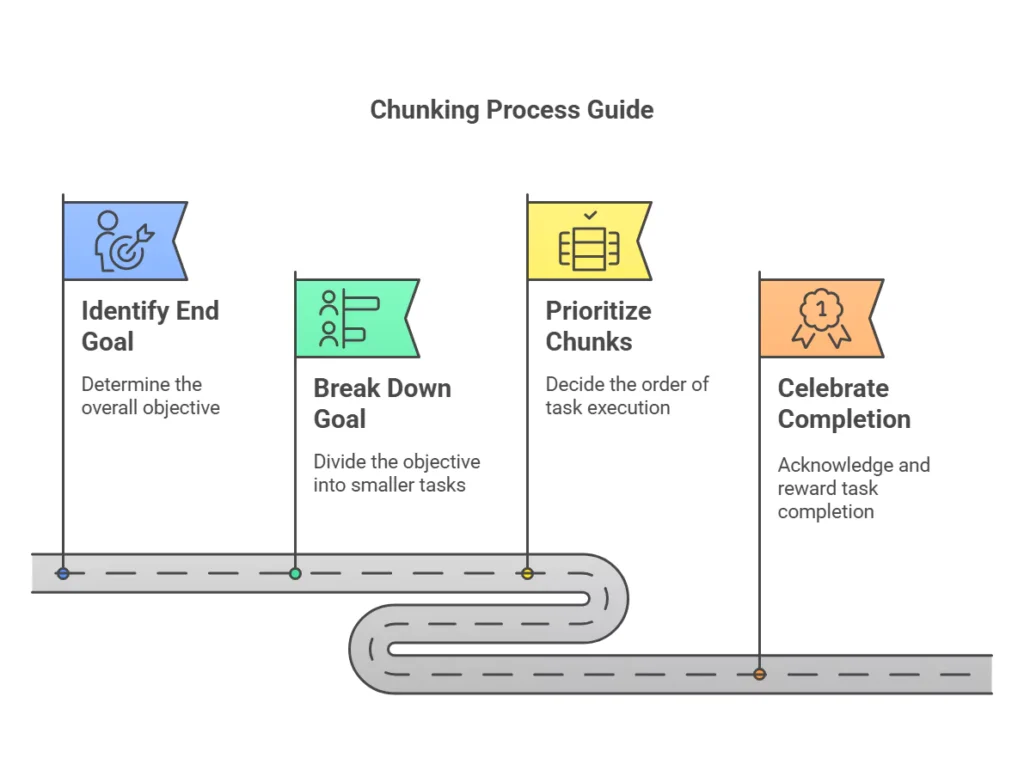
- See the Big Picture: What’s your end goal? Whether it’s cleaning your house, planning a trip, or learning a new skill, get clear on what you’re aiming for.
- Break It Down: Split the big goal into smaller chunks. For example, clean one room at a time, plan your trip in stages (flights, hotels, itinerary), or focus on learning one new skill at a time.
- Prioritize: Start with either the most urgent chunk or the easiest one—whichever feels less overwhelming.
- Celebrate Small Wins: Knocked out a chunk? High five yourself, grab a snack, or take a quick break. Those little rewards keep you motivated.
The Bottom Line
Okay, real talk—chunking is one of those things you try once and wonder how you ever survived without it. It’s like finally figuring out the secret to staying sane while juggling a million things.
Cleaning? No problem—one room at a time.
Learning something new? Easy—one lesson at a time.
Stress? Bring it on—one worry at a time.
The best part? It doesn’t just help you get things done—it actually makes life feel lighter. So, what are you waiting for? Start chunking, take it one step at a time, and watch as even the craziest days feel totally doable. You’ve got this!
And hey, maybe treat yourself to that pizza slice (or three) when you’re done. You’ve earned it. 🍕







